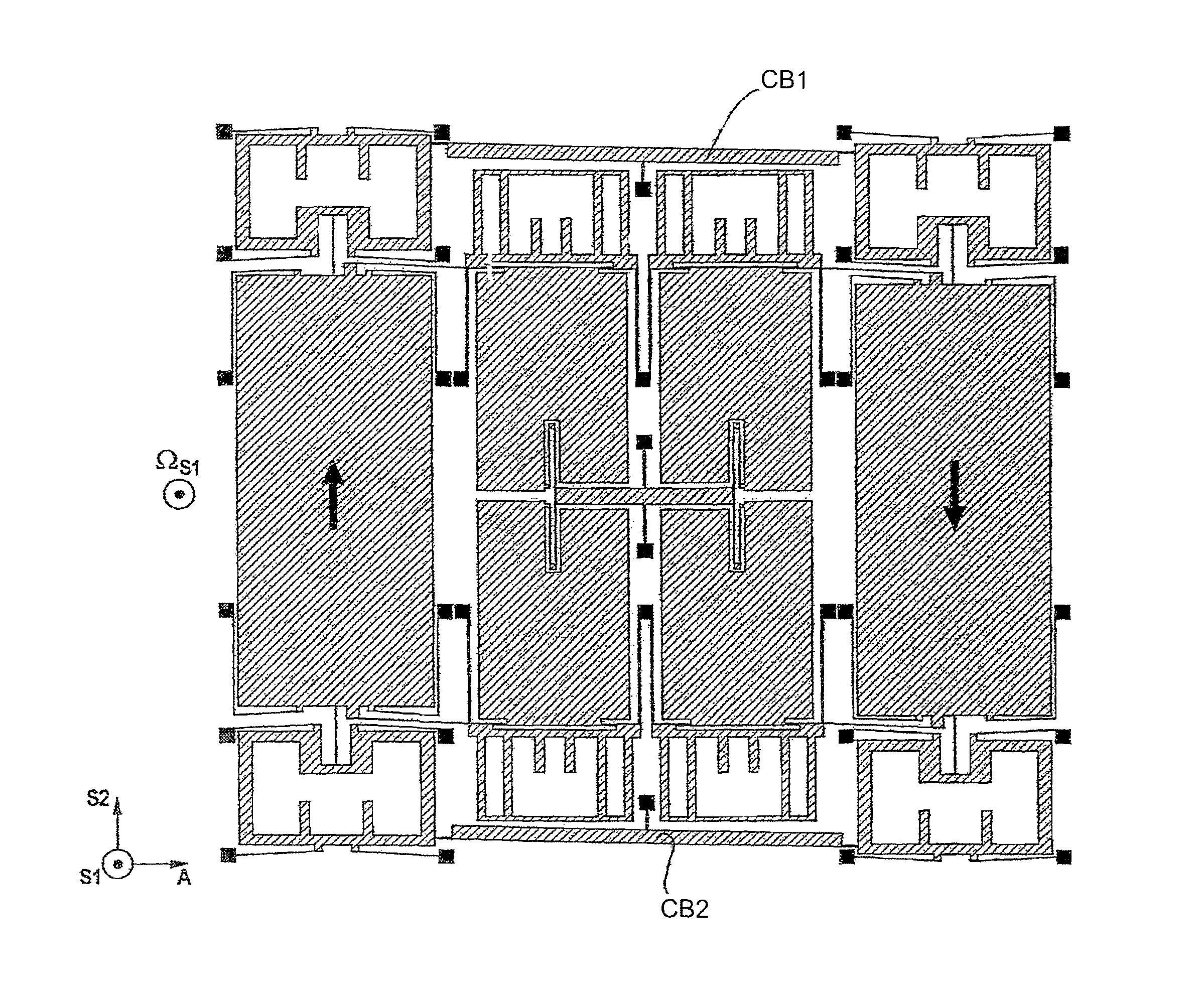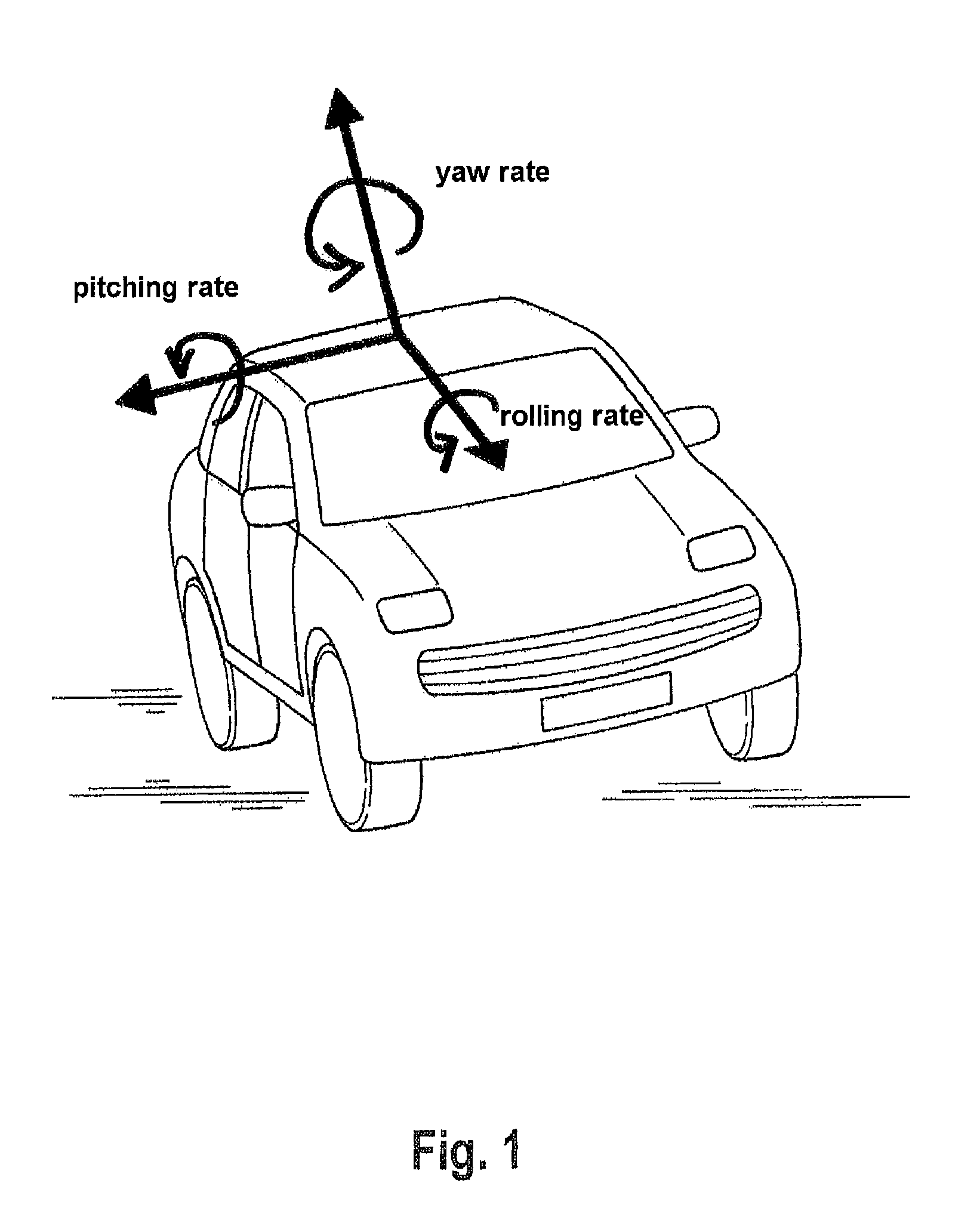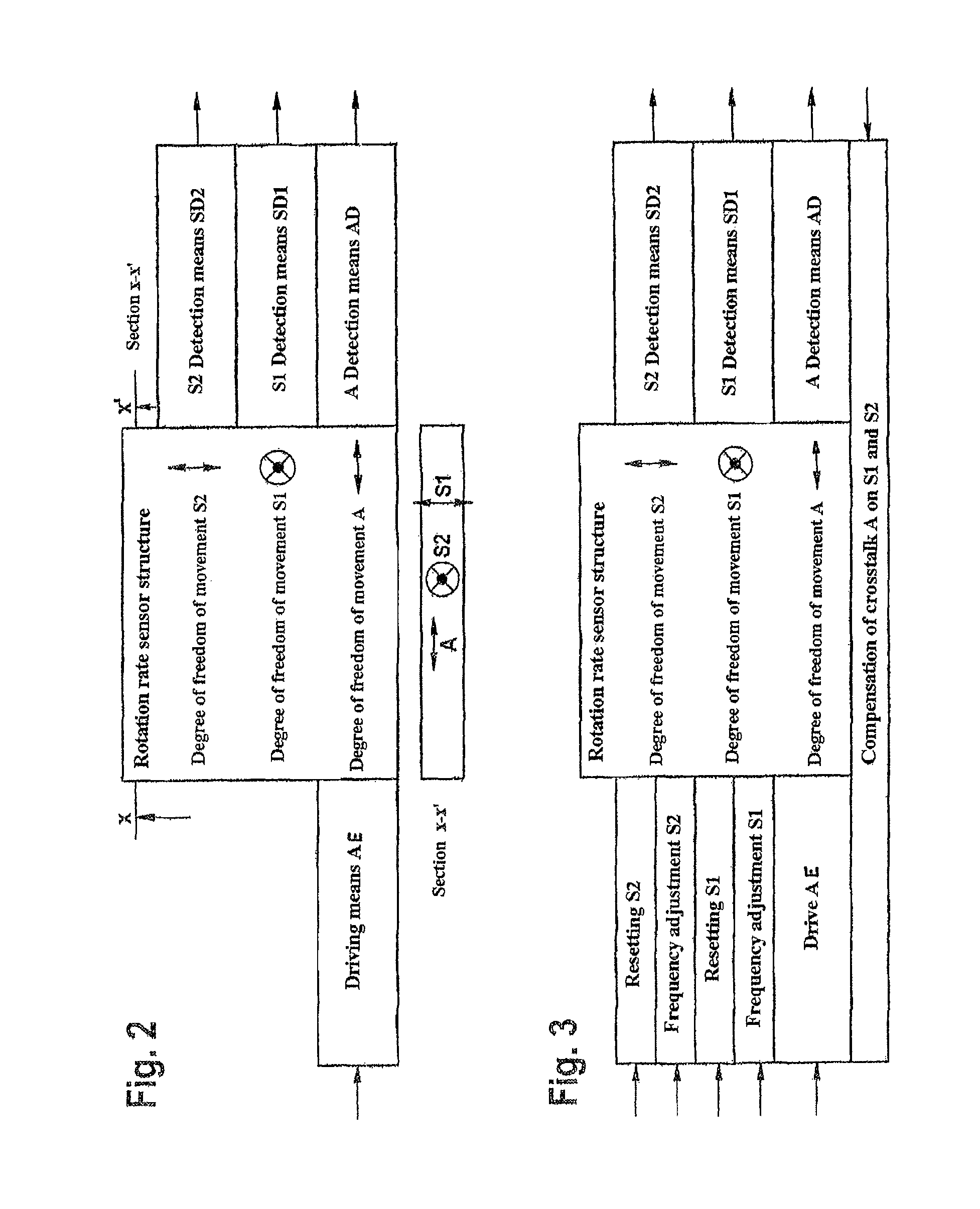Double-axis rotation rate sensor
a technology of rotation rate sensor and double axis, which is applied in the direction of acceleration measurement using interia force, turn-sensitive devices, instruments, etc., can solve the problems of limited yaw rate, limited yaw movement of the vehicle and therefore the actual yaw rate, and the relatively large number of accidents involving only one motor vehicle, etc., to achieve more precise and/or robust detection, and relatively compact design of the rotation rate sensor
- Summary
- Abstract
- Description
- Claims
- Application Information
AI Technical Summary
Benefits of technology
Problems solved by technology
Method used
Image
Examples
Embodiment Construction
[0091]The rotation rate sensor is preferably based on the principle of a vibrating micromechanical rotation rate sensor which is composed of a system of spring elements and masses. The core is formed by a monolithic rotation rate sensor element with a degree of freedom of movement A. Here, a drive unit (AE) excites parts of the sensor structure or the entire structure (seismic mass: SM) to oscillate along this degree of freedom. The resonant frequency along the degree of freedom A or the first axis is fA. In addition, there are two further degrees of freedom of movement (S1 and S2) and / or a second and third axis in the direction of which parts of the structure or the entire structure can be deflected if the rotation rate sensor rotates about axes which are orthogonal to A, in particular in the direction of S1 and S2. The degrees of freedom of movement S1 and S2 are particularly preferably essentially orthogonal with respect to one another and orthogonal with respect to the driving d...
PUM
 Login to View More
Login to View More Abstract
Description
Claims
Application Information
 Login to View More
Login to View More - R&D
- Intellectual Property
- Life Sciences
- Materials
- Tech Scout
- Unparalleled Data Quality
- Higher Quality Content
- 60% Fewer Hallucinations
Browse by: Latest US Patents, China's latest patents, Technical Efficacy Thesaurus, Application Domain, Technology Topic, Popular Technical Reports.
© 2025 PatSnap. All rights reserved.Legal|Privacy policy|Modern Slavery Act Transparency Statement|Sitemap|About US| Contact US: help@patsnap.com



